 |
 |
 |
| |
Gaps in HIV Care Cascade for Older South Africans Raise Concern
|
| |
| |
International Workshop on HIV and Aging, October 13-14, 2022
By Mark Mascolini for NATAP and Virology Education
Gaps in reaching 95-95-95 HIV treatment goals in two high-burden South African urban health districts raise concerns that these and similar districts could soon face a "double-disease burden" of aging and HIV [1]. 95-95-95 is shorthand for the goals of diagnosing 95% of people with HIV, getting 95% of the diagnosed onto antiretroviral therapy (ART), and attaining an undetectable viral load in 95% of those treated.
Researchers with Johannesburg's Wits Reproductive Health and HIV Institute (RHI) and the US Centers for Disease Control and Prevention reported an HIV prevalence of 13% in South Africans 50 and older. As the HIV population continues to age, health planners expect that fraction to rise to 24% by 2030. This trend has grave implications, the researchers say, because age-associated diseases already have a high prevalence in South Africa and growing numbers of older people with HIV would inflate their prevalence even more.
The Wits/CDC team asked whether 95-95-95 should be retooled for older people with HIV. To get a firmer grasp on the dimensions of this challenge, they analyzed 95-95-95 program performance data from two high HIV-burden urban metropolitan districts in Gauteng province. Gauteng in the smallest South African province in land mass (1.5%) but the biggest in population (26%). Johannesburg and Pretoria, one of South Africa's three capitals, lie in Gauteng.
With PEPFAR funding, Wits RHI oversees HIV program implementation in two Gauteng districts with high HIV rates. The investigators culled age- and gender-disaggregated data from program databases for the 6 months spanning October 2021 through March 2022. They defined retention in care as being within 28 days of the last scheduled appointment. Viral load coverage meant at least one viral load test within a rolling 12-month period for people taking ART for more than 6 months. Viral suppression meant a viral load below 1000 copies.
During the 6-month study period, the two districts ran over 760,000 HIV tests, only 6% of them in people 50 and older. More than 539,000 people with HIV received care, of which 23% were 50 or older. Among people 50 and older, 74% were between 50 and 60.
Among the 45,327 HIV tests done in people 50 and older, 7% identified a new case of HIV infection. That incidence almost doubles the overall 4% HIV positivity rate for the program. Among the 3344 newly identified older people with HIV, 2737 (82%) began ART, well below the 95% goal. The number of 50-and-older people retained in care jumped by 6772 to yield a total cohort of 125,173. Among older people eligible for viral load testing, 83% had a viral load test. And among those tested, 96% had a suppressed viral load (below 1000 copies).
Throughout the study period, lots of people moved in and out of the cohort. The researchers tallied 5522 ART interruptions between October and December and 2996 between January and March. In those two 3-month periods, 2341 and 3600 people returned to care. Deaths from any cause numbered 300 among older people with HIV during study months.
The researchers stress that they found "clear gaps in the HIV treatment cascade" for 50-and-older people with HIV in these two densely populated Gauteng districts. Nevertheless, because of the growing number of 50- to 60-year-olds in this study population, health workers will have to manage their "increasingly complex healthcare needs." The Wits/CDC team believes these numbers cry out for "tailored programmatic planning" for older people with HIV.
Reference
1. Fick C, Sawry S, Maimela G, et al. The impending African challenge: gaps in 95-95-95 performance herald an emerging double-disease burden of ageing and HIV in two high burden metropolitan health districts in South Africa. International Workshop on HIV and Aging, October 13-14, 2022. Abstract 7.
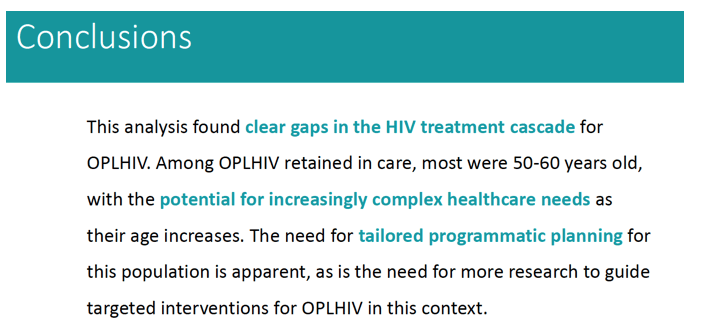
---------------------------
There was another presentation at workshop reporting higher rates of ART interruptions for older PLWH.
1.7% of all individuals over 50 on ART regardless of time on ART interrupted treatment. People over 50 who are not well established on ART (ie on ART < 3 months) interrupt treatment at a rate of 8.7%.
--------------------
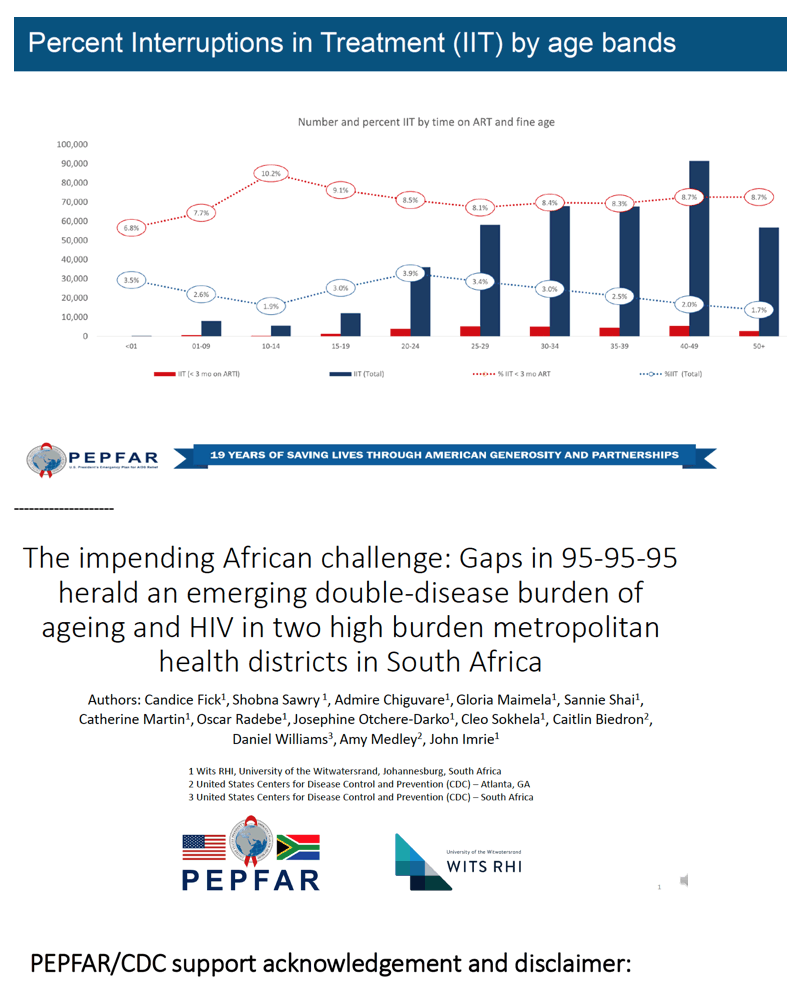
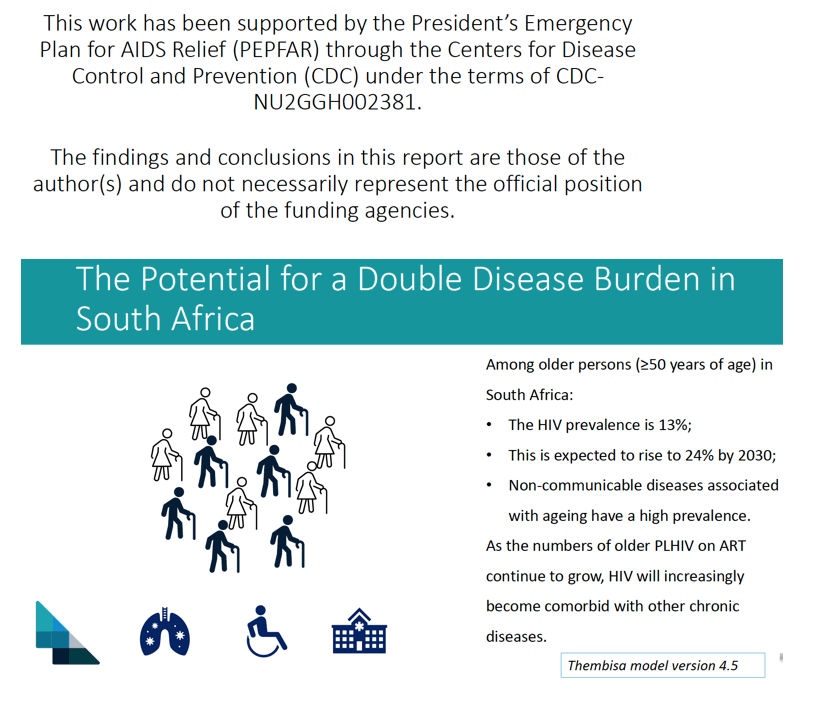
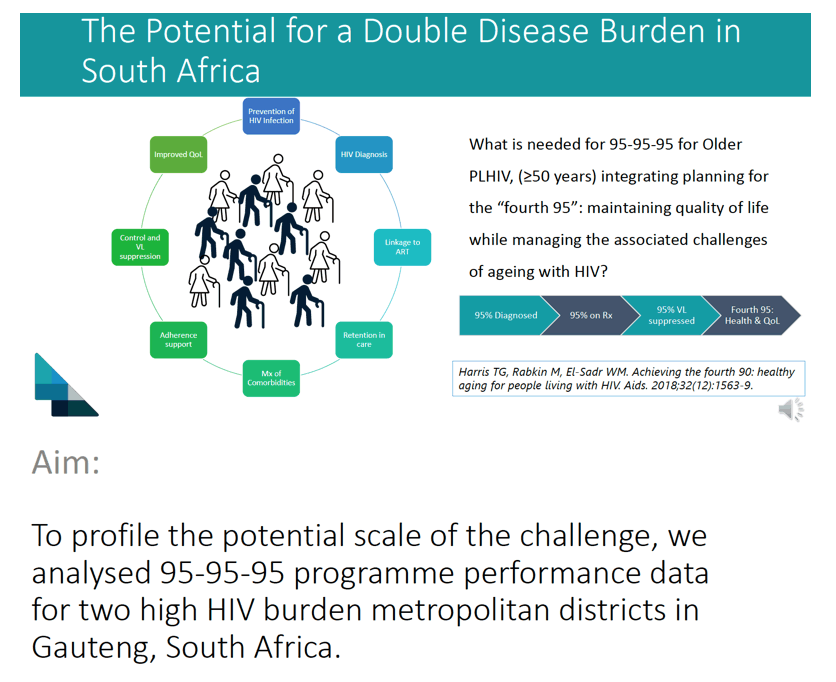
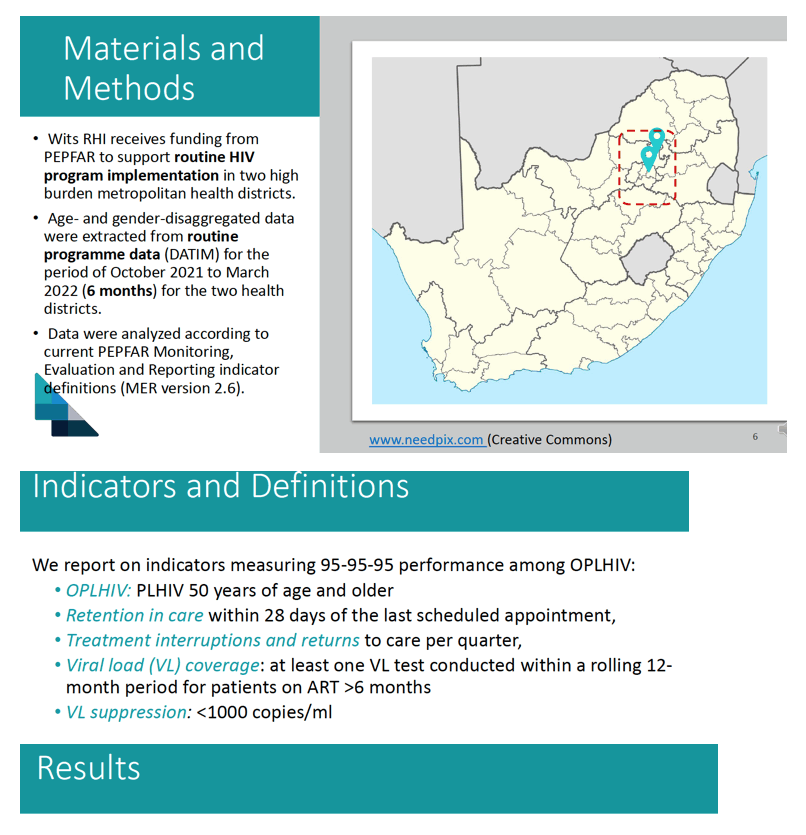
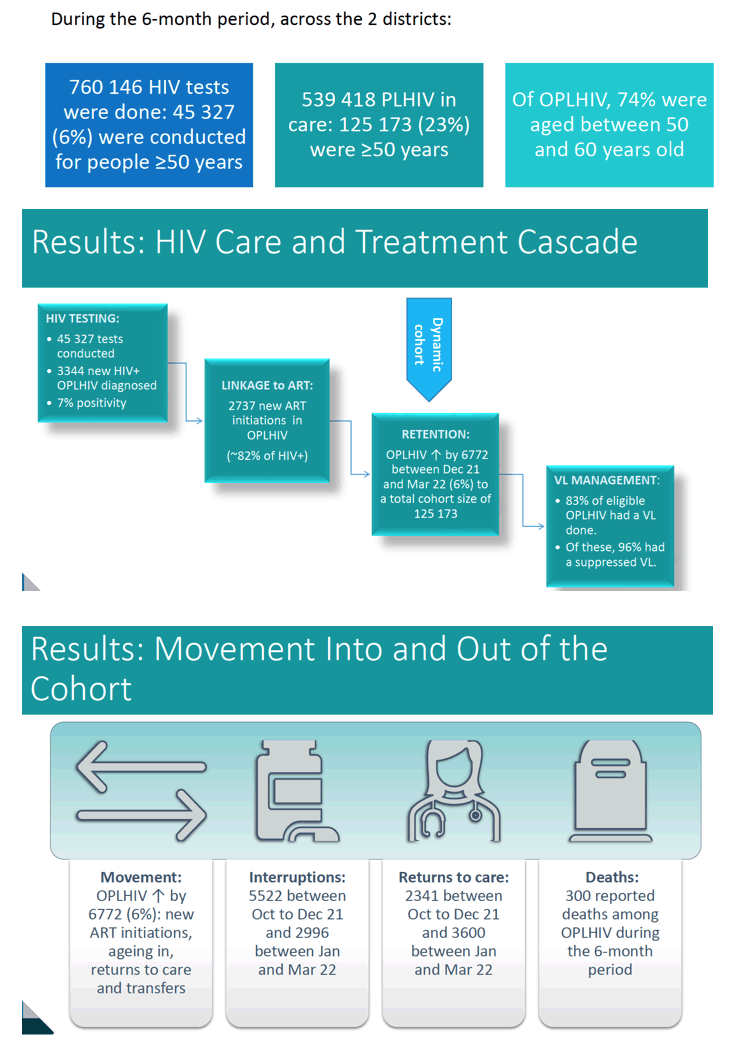
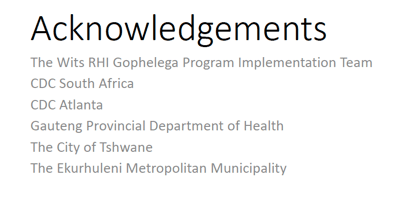
|
| |
|
 |
 |
|
|